I developed an aco algorithm. I think it is not working properly... it will be hard to explain, but I will try.
The problem is pheromone level is floating. I assume, that pheromone level on the best path must be increased more and more, but in my programm it is not.
Optimal path is a path, which is built by finding maximum pheromone level on edges between start vertex and goal vertex.
Example:
1 5 3
4 5 10
0 0 0
Optimal path will be 1 -> 2 -> 3.
Weight matrix:
0 3 10
0 0 3
0 0 0
Best path is: 1 -> 2 -> 3 (length: 6)
Another path (not optimal): 1 -> 3 (length: 10)
Pheromone levels after 10 ants:
0 5 1
0 0 3
0 0 0
Optimal path: 1 -> 2 -> 3
Pheromone levels after 20 ants (10 more):
0 1 5
0 0 1
0 0 0
Optimal path: 1 -> 3
Pheromone levels after 30 ants:
0 4 1
0 0 3
0 0 0
Optimal path: 1 -> 2 -> 3
Pheromone levels after 30 ants:
0 4 6
0 0 2
0 0 0
Optimal path: 1 -> 3
This is just an example, but it represents what the pheromones matrix in my program look like.
Pseudocode of my programm:
init alpha, beta and other coef's
while antCount do
{
current = start
// + init visited array for current ant, some others variables
while vertexAvailable(current) do
{
find probabilities to go to 1
or another vertex
generate random number, choose next
vertex depending on it,
defining nextVertex
current = nextVertex
if current == stop then
{
get path length
update pheromones on path of current
ant depending on path length
}
}
evaporation of pheromones
antCount = antCount - 1
}
So, why are pheromone levels in my program floating? Why doesn't the best path have most pheromone levels? I understand that there is probability factor in this algorithm, but it have to show correct result anyway.
What I am doing in my program? Here you can find full main loop source of my program.
1) Main cycle is a cycle, which will until there are any ants available for current iteration.
1.1) In this cycle I have another cycle (inner cycle), which will be fired until current ant have vertexes to go to them (vertexes mustn't be visited by current ant).
In inner cycle I do this:
1.1.1) Calculating denominator of the equation below

This formula will calculate probability of selecting ij path (i is current node, j is next node).
Code:
var denom = 0;
for(col in graph[currentVertex])
{
// этот цикл формирует знаменатель формулы
var weight = graph[currentVertex][col];
if(weight != 0 && visited[col] != true)
{
var tau = pheromone[currentVertex][col];
denom = denom + getAttractiveness(tau, weight);
}
}
Also, there I adding all probabilites to an interval, which will help me to decide what vertex to choose.
Code:
for(col in graph[currentVertex])
{
var weight = graph[currentVertex][col];
if(weight != 0 && visited[col] != true)
{
var tau = pheromone[currentVertex][col];
var nom = getAttractiveness(tau, weight);
var probability = nom/denom;
intervals[col] = probability+intervals.last;
intervals.last = probability+intervals.last;
}
}
Code:
var rand = Math.random();
var nextVertex = 0;
for(vertex in intervals)
{
if (rand < intervals[vertex])
{
nextVertex = parseInt(vertex,10);
break;
}
}
1.1.4) Some instructions, setting helpers (path helper, visited helped) etc
1.1.5) Next step, I am checking if founded vertex is goal vertex
If yes (that means, that ant found goal vertex) I am doing this:
1.1.5.1) Getting length of current ant path
Code:
var length = 0;
while(source = pathCopy.pop())
{
console.log("dest: " + dest + " source: " + source);
length = length + graph[source][dest];
dest = source;
}
1.1.5.2) Updating pheromone level on this path
Code:
var deltaTau = 5/length;
var dest = path.pop();
var source;
while(source = path.pop())
{
var oldPheromone = pheromone[source][dest];
// обновление феромона формула 3
var newPheromone = oldPheromone+deltaTau;
// console.log('pheromone levels: old =
// '+oldPheromone+' new = ' + newPheromone);
pheromone[source][dest] = newPheromone;
dest = source;
}
1.2) At the end of main cycle I am doing evaporation of pheromone levels:
Code:
for(row in pheromone)
{
for(col in pheromone[row])
{
var oldPheromone = pheromone[row][col];
// обновление феромона формула 3
var newPheromone = (1-ktau)*oldPheromone;
pheromone[row][col] = newPheromone;
}
}